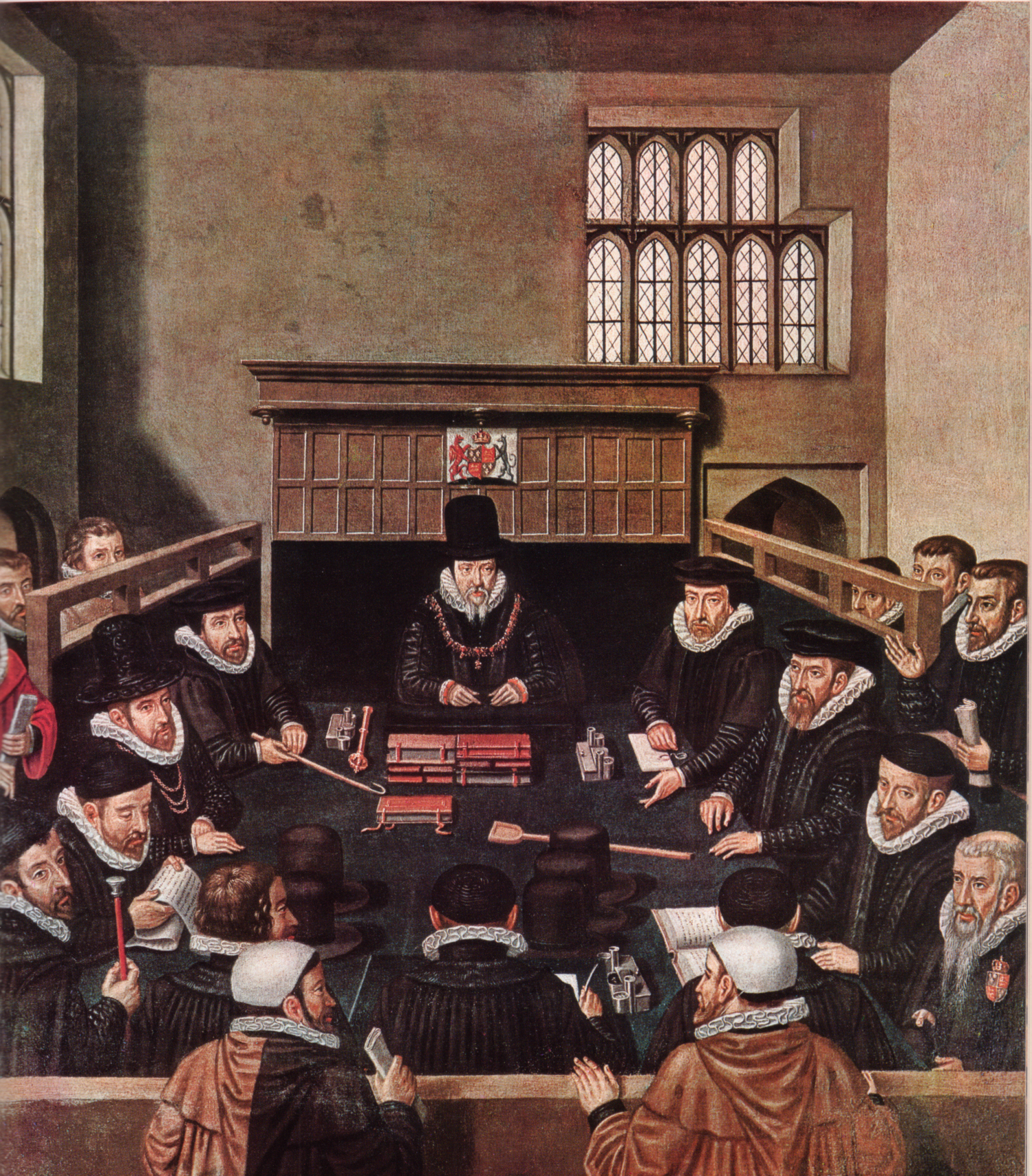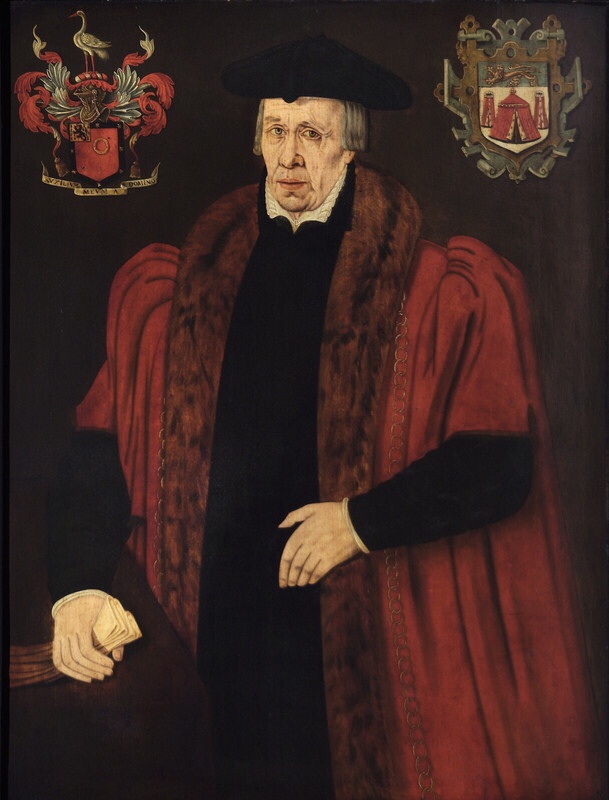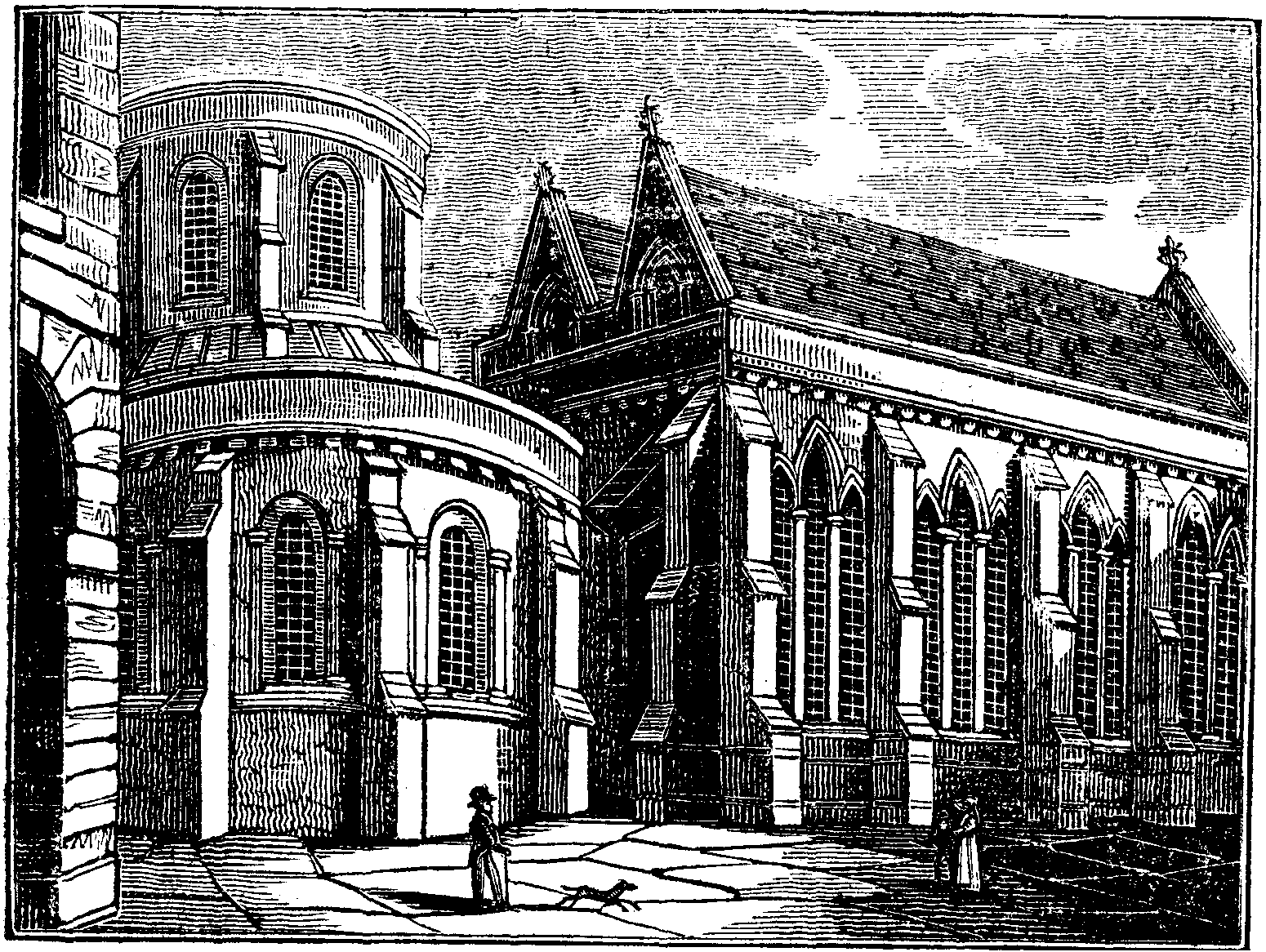|
Antonio Del Corro
Antonio del Corro (Corrano, de Corran, Corranus; 1527 in Seville – 1591 in London) was a Spanish monk who became a Protestant convert. A noted Calvinist preacher and theologian, he taught at the University of Oxford and wrote the first Spanish grammar in English. Spain and exile on the Continent He was a Hieronymite of the Abbey of San Isidro, Seville. Influenced by Cipriano de Valera, he came into contact with the Protestant ideas of Luther, Melanchthon and Bullinger. Against Inquisition He left Spain with others in 1557, fearing the Spanish Inquisition. Some scholars considered that he may be behind the pseudonym Reginaldus Gonsalvius Montanus (Renaldo Gonzalez Montano), who published in 1567 the account ''Sanctae Inquisitionis Hispanicae Artes aliquot detectae ac palam traductae'', a major source for subsequent accounts of the Inquisition; however, others believe it belonged to Casiodoro de Reina. European travels He travelled to Lausanne and Geneva but came to quarrel wi ... [...More Info...] [...Related Items...] OR: [Wikipedia] [Google] [Baidu] |
Seville
Seville ( ; , ) is the capital and largest city of the Spain, Spanish autonomous communities of Spain, autonomous community of Andalusia and the province of Seville. It is situated on the lower reaches of the Guadalquivir, River Guadalquivir, in the southwest of the Iberian Peninsula. Seville has a municipal population of about 701,000 , and a Seville metropolitan area, metropolitan population of about 1.5 million, making it the largest city in Andalusia and the List of metropolitan areas in Spain, fourth-largest city in Spain. Its old town, with an area of , contains a UNESCO World Heritage Site comprising three buildings: the Alcázar of Seville, Alcázar palace complex, the Seville Cathedral, Cathedral and the General Archive of the Indies. The Seville harbour, located about from the Atlantic Ocean, is the only river port in Spain. The capital of Andalusia features hot temperatures in the summer, with daily maximums routinely above in July and August. Seville was founded ... [...More Info...] [...Related Items...] OR: [Wikipedia] [Google] [Baidu] |
William Cecil, 1st Baron Burghley
William Cecil, 1st Baron Burghley (13 September 15204 August 1598), was an English statesman, the chief adviser of Elizabeth I, Queen Elizabeth I for most of her reign, twice Secretary of State (England), Secretary of State (1550–1553 and 1558–1572) and Lord High Treasurer from 1572. In his description in the Encyclopædia Britannica Eleventh Edition, ''Encyclopædia Britannica'' Eleventh Edition, Albert Pollard, A.F. Pollard wrote, "From 1558 for forty years the biography of Cecil is almost indistinguishable from that of Elizabeth and from the history of England." Cecil set as the main goal of English policy the creation of a united and Protestant British Isles. His methods were to complete the control of Ireland, and to forge an alliance with Scotland. Protection from invasion required a powerful Royal Navy. While he was not fully successful, his successors agreed with his goals. In 1587, Cecil persuaded the Queen to order the Execution of Mary, Queen of Scots, executio ... [...More Info...] [...Related Items...] OR: [Wikipedia] [Google] [Baidu] |
Free Will
Free will is generally understood as the capacity or ability of people to (a) choice, choose between different possible courses of Action (philosophy), action, (b) exercise control over their actions in a way that is necessary for moral responsibility, or (c) be the ultimate source or originator of their actions. There are different theories as to its nature, and these aspects are often emphasized differently depending on philosophical tradition, with debates focusing on whether and how such freedom can coexist with determinism, divine foreknowledge, and other constraints. Free will is closely linked to the concepts of moral responsibility, praise, culpability, and other judgements which apply only to actions that are freely chosen. It is also connected with the concepts of Advice (opinion), advice, persuasion, deliberation, and Prohibitionism, prohibition. Traditionally, only actions that are freely Will (philosophy), willed are seen as deserving credit or blame. Whether free ... [...More Info...] [...Related Items...] OR: [Wikipedia] [Google] [Baidu] |
Doctor Of Divinity
A Doctor of Divinity (DD or DDiv; ) is the holder of an advanced academic degree in divinity (academic discipline), divinity (i.e., Christian theology and Christian ministry, ministry or other theologies. The term is more common in the English-speaking world than elsewhere. In the United Kingdom and Ireland, the DD is usually a higher doctorate conferred upon a religious scholar of standing and distinction, usually for accomplishments beyond the Doctor of Philosophy, PhD or Doctor of Theology, ThD level. In the United States, the DD is generally an honorary degree. In Catholic higher education, Catholic universities, faculties of Catholic theology, theology usually grant the degree of Doctor of Sacred Theology (STD), but the DD may be awarded as an honorary degree. Doctor of Divinity by country or church Great Britain & Ireland In the United Kingdom and Ireland, the DD is a higher doctorate conferred by universities upon a religious scholar of standing and distinction, ... [...More Info...] [...Related Items...] OR: [Wikipedia] [Google] [Baidu] |
John Rainolds
John Rainolds (or Reynolds) (1549 – 21 May 1607) was an English academic and churchman, of Puritan views. He is remembered for his role in the Authorized Version of the Bible, a project of which he was initiator. Life He was born about Michaelmas 1549 at Pinhoe, near Exeter. He was fifth son of Richard Rainolds; William Rainolds was his brother. His uncle Thomas Rainolds held the living of Pinhoe from 1530 to 1537, and was subsequently Warden of Merton College, Oxford, and Dean of Exeter. John Rainolds appears to have entered the University of Oxford originally at Merton, but on 29 April 1563 he was elected to a scholarship at Corpus Christi College, where two of his brothers, Hierome and Edmond, were already fellows. He became probationary fellow on 11 October 1566, and full fellow two years later. While a student at Corpus, he converted from Catholicism to Protestantism. On 15 October 1568 he graduated B.A.; and about this time he was assigned as tutor to Richard ... [...More Info...] [...Related Items...] OR: [Wikipedia] [Google] [Baidu] |
St John's College, Oxford
St John's College is a Colleges of the University of Oxford, constituent college of the University of Oxford. Founded as a men's college in 1555, it has been coeducational since 1979.Communication from Michael Riordan, college archivist Its founder, Sir Thomas White (merchant), Thomas White, intended to provide a source of educated Roman Catholic clerics to support the Counter-Reformation under Mary I of England, Queen Mary. St John's is the wealthiest college in Oxford, with assets worth over £790 million as of 2022, largely due to nineteenth-century suburban development of land in the city of Oxford of which it is the ground landlord. The college occupies a site on St Giles', Oxford, St Giles' and has a student body of some 390 undergraduates and 250 postgraduates. There are over 100 academic staff, and a like number of other staff. In 2018 St John's topped the Norrington Table, the annual ranking of Oxford colleges' final results, and in 2021, St John's ranked second with a ... [...More Info...] [...Related Items...] OR: [Wikipedia] [Google] [Baidu] |
Oriel College
Oriel College () is a constituent college of the University of Oxford in Oxford, England. Located in Oriel Square, the college has the distinction of being the oldest royal foundation in Oxford (a title formerly claimed by University College, whose claim of being founded by King Alfred is no longer promoted). In recognition of this royal connection, the college has also been historically known as King's College and King's Hall.Watt, D. E. (editor), ''Oriel College, Oxford'' ( Trinity term, 1953) — Oxford University Archaeological Society, uses material collected by C. R. Jones, R. J. Brenato, D. K. Garnier, W. J. Frampton and N. Covington, under advice from W. A. Pantin, particularly in respect of the architecture and treasures (manuscripts, printed books and silver plate) sections. 16 page publication, produced in association with the Ashmolean Museum as part of a college guide series. The reigning monarch of the United Kingdom (since 2022, Charles III) is the official vis ... [...More Info...] [...Related Items...] OR: [Wikipedia] [Google] [Baidu] |
Hart Hall
Hertford College ( ), previously known as Magdalen Hall, is a constituent college of the University of Oxford in England. It is located on Catte Street in the centre of Oxford, directly opposite the main gate to the Bodleian Library. The college’s Old and New Quadrangles are connected by the Bridge of Sighs. There are around 600 students at the college at any one time, comprising undergraduates, graduates and visiting students from overseas. The first foundation on the Hertford site began in the 1280s as Hart Hall and became a college in 1740 but was dissolved in 1816. In 1820, the site was taken over by Magdalen Hall, which had emerged around 1490 on a site adjacent to Magdalen College. In 1874, Magdalen Hall was incorporated as a college, reviving the name Hertford College. In 1974, Hertford was part of the first group of all-male Oxford colleges to admit women. Hertford College specialises in both Irish studies and Irish history. Hertford has long been associated with I ... [...More Info...] [...Related Items...] OR: [Wikipedia] [Google] [Baidu] |
Master Of The Temple
The Temple Church, a royal peculiar in the Church of England, is a church in the Inner and Middle Temples located between Fleet Street and the River Thames, built by the Knights Templar for their English headquarters in the Temple precinct. It was consecrated on 10 February 1185 by Patriarch Heraclius of Jerusalem. During the reign of King John (1199–1216) it served as the royal treasury, supported by the role of the Knights Templar as proto-international bankers. It is now jointly owned by the Inner Temple and Middle Temple Inns of Court, bases of the English legal profession. It is famous for being a round church, a common design feature for Knights Templar churches, and for its 13th- and 14th-century stone effigies. It was heavily damaged by German bombing during World War II and has since been greatly restored and rebuilt. The area around the Temple Church is still known as the Temple. Temple Bar, a jurisdictional gateway, stood in the middle of Fleet Street in the ... [...More Info...] [...Related Items...] OR: [Wikipedia] [Google] [Baidu] |
Richard Alvey (rector)
Richard Alvey (died 1584) was an English clergyman, known as the master of the Temple Church. Life Alvey received his education at Cambridge University, where he graduated B.A. in 1529–30, and M.A. in 1533. He was admitted a fellow of St. John's College, Cambridge, in 1537 or 1538 during the prefecture of Dr. George Day. On 24 February 1540 he was presented by his college to the rectory of Thorington in Essex. He proceeded B.D. in 1543, was admitted to the rectory of Grinstead (modern Greenstead), near Colchester, on the king's presentation, 11 May 1546, and to the rectory of Sandon, also in Essex, on the presentation of Sir John Gate, 13 November 1548. On 11 December 1552 he was installed canon of Westminster Abbey. Early in the reign of Queen Mary he was deprived of all his preferments. He went into exile, residing at Frankfurt till after the accession of Queen Elizabeth. He returned to England and was restored to the rectory of Thorington. By letters-patent dated 13 Feb ... [...More Info...] [...Related Items...] OR: [Wikipedia] [Google] [Baidu] |
Predestination
Predestination, in theology, is the doctrine that all events have been willed by God, usually with reference to the eventual fate of the individual soul. Explanations of predestination often seek to address the paradox of free will, whereby God's omniscience seems incompatible with human free will. In this usage, predestination can be regarded as a form of religious determinism; and usually predeterminism, also known as theological determinism. History Pre-Christian period Some have argued that the Book of Enoch contains a deterministic worldview that is combined with dualism. The book of Jubilees seems to harmonize or mix together a doctrine of free will and determinism. Ben Sira affirms free will, where God allows a choice of bad or good before the human and thus they can choose which one to follow. New Testament period There is some disagreement among scholars regarding the views on predestination of first-century AD Judaism, out of which Christianity came. Josephus ... [...More Info...] [...Related Items...] OR: [Wikipedia] [Google] [Baidu] |
Hemmingius
Niels Hemmingsen (May/June 1513 – 23 May 1600), Latinized Nicolaus Hemmingius, was a Danish Lutheran theologian. He was pastor of the Church of the Holy Ghost, Copenhagen and professor at the University of Copenhagen. The street Niels Hemmingsens Gade in Copenhagen is named in his honor. Biography Born in Errindlev on Lolland. He attended Latin school at Nysted and Roskilde. He studied from 1537 to 1542 at the University of Wittenberg, where the humanistic theology of Philipp Melanchthon made a strong impression on him. Returning to Denmark, he became a prolific author of works in Latin. In 1543 he became professor of Greek at the University of Copenhagen and in 1553 professor of theology. He was pastor of the Church of the Holy Ghost, Copenhagen from 1547 to 1553. He received his doctorate in 1557 and became vice chancellor in 1572. He gained great influence as a teacher and was also an adviser to the king and the National Council. In 1574 he published ''Syntagma institut ... [...More Info...] [...Related Items...] OR: [Wikipedia] [Google] [Baidu] |







